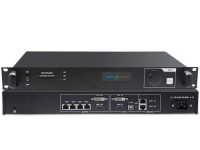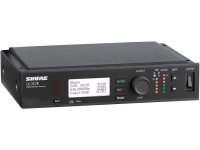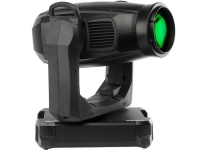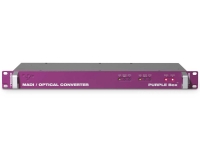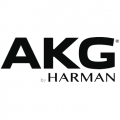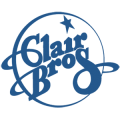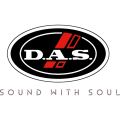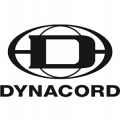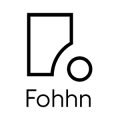ABOUT THE PRODUCT
ABOUT THE MANUFACTURER
GLOSSARY
PM7 Rivage
Perfecting the Art of Live Sound
Yamaha's first professional live sound console, the PM200, was released more than 40 years ago. The PM series has provided fertile ground from which numerous sound reinforcement milestones have grown ever since. Many of those innovations have become benchmarks that professionals depend on to this day. The RIVAGE PM10 launched a new generation of PM consoles that have already become standards in large-scale live sound applications because of their unequalled sound, operation, functionality, reliability, expandability, and more. Now the RIVAGE PM7 digital mixing system expands the digital mixing options available for an even broader range of applications.
A RIVAGE PM7 system is based around the CSD-R7 Digital Mixing Console with built-in signal processing for mixing and effects. Other required components are one or more I/O racks for input and output, and a dedicated interface card for network connectivity. The RIVAGE PM7 system?s CSD-R7 Digital Mixing Console is the same size as the RIVAGE PM10 system CS-R10 Control Surface and has the same control layout. With built-in DSP it offers similarly high standards of operation and workflow efficiency in a relatively compact, portable system.
The Yamaha PM brand continues to bring true innovation to the developing live sound scene.
Sound: The RIVAGE PM Sound Is the Music Itself
The ideal starting point for creative audio engineering is transparent, uncolored sound. All Yamaha mixers are built on that philosophy, with the goal of allowing engineers to capture the on-stage sound accurately, without coloration, and then add creative touches as required. Yamaha's unwavering adherence to this concept continues in the RIVAGE PM7.
Two I/O Rack Categories to Ideally Capture the On-stage Sound
Yamaha offers two types of high-performance I/O Rack units for RIVAGE PM7 input and output, each providing compatibility with a different audio network.
One is the TWINLANe network, using optical cable to simultaneously carry up to 400 audio channels. Combinations of the RPio622 and/or RPio222 I/O racks and HY256-TL or HY256-TL-SMF audio interface cards allow input via Hybrid Microphone Preamplifiers with analog input stages that take the Yamaha ?natural sound? concept to new heights, as well as digital sections with immaculate VCM-technology models of Rupert Neve Designs transformer and SILK processing circuitry that offer outstanding musicality and atmosphere.
Then there?s the Dante audio network from Audinate, already standard in CL and QL series digital consoles as well as a range of other Yamaha pro audio products. Dante-equipped Rio3224-D2 and Rio1608-D2 I/O Racks and the HY144-D audio interface card can be combined to provide natural sound input at full RIVAGE PM series quality.
Cleanly and accurately captured on-stage sound provides a perfect foundation for creative processing.
Rupert Neve Quality for All Engineers (RPio622 & RPio222)
Fitted with RY-ML-SILK analog input cards the RPio622 and RPio222 I/O racks offer outstanding emulations of the transformer circuitry and SILK processing featured in microphone preamplifiers from Rupert Neve Designs, immaculately modeled using Yamaha VCM (Virtual Circuitry Modeling) technology.
Recording engineers value Rupert Neve microphone preamps for their appealing natural compression and saturation. SILK processing can take that seductive sonic foundation to new levels with added power and flair. Sounds that tend to get lost in the mix are given new life and luster with a lush analog-like core.
The SILK processing function provided in the RY16-ML-SILK audio interface card Hybrid Microphone Preamplifiers offers two variations: 'RED' for sparkling energy, and 'BLUE' for solidity and power. There's also a continuously variable TEXTURE knob that musically shapes the harmonic components to best suit the source. The benefits of SILK processing are also evident in the way channel EQ and reverb plug-ins affect the sound.
The RIVAGE PM7 makes the coveted Rupert Neve preamplifier sound available to a wider range of engineers who can put it to creative use.
Dan Dugan Automatic Mixer Built In
Through in-depth collaboration with Dan Dugan Sound Design, renowned Dan Dugan automatic microphone mixing with its advanced algorithms is built into the RIVAGE PM series digital mixing systems. Setup is easy: just insert the processor into up to 64 channels for automatically optimized microphone gain distribution. Gain control is smooth and natural, as though experienced human operators were doing the mix. The system also effectively reduces feedback and comb filter issues. For speech applications, especially non-scripted situations, this allows the operator to concentrate on details other than fader operation for consistently high-quality mixes.
Operation Smooth, Polished RIVAGE PM Operation
The mixing console is the engineer?s primary tool. Operability is crucial, particularly in today's rapidly evolving live sound environment. That is why Yamaha digital live sound consoles are designed to deliver a unique blend of smooth analog-style operation ease with some of the most advanced digital technology and features available. The worldwide acceptance of Yamaha digital mixing consoles is a testament to their success, and the RIVAGE PM7 carries on the tradition. It has the same dimensions and panel layout as the highly acclaimed RIVAGE PM10, offering the same user experience.
With operation and features designed to comprehensively support today's live sound scene, the RIVAGE PM series allows engineers to focus on the sound and enjoy the creative process.
The Complete Yamaha selected Channel Interface
A key element of legendary Yamaha digital console operability is the selected Channel concept, providing direct access to the parameters of any channel selected via a SEL key. The selected Channel section of the RIVAGE PM7 inherits the full-featured configuration of the RIVAGE PM10, providing direct, fast access to all channel parameters. Encoders, buttons, and indicators in a comprehensive layout make maximum use of the available panel space for comfortable operation in any environment or mixing situation.
Touch Screen and Fader Strips Merge for Intuitive Control
The RIVAGE PM7 control surface features three groups of 12 faders to which channels can be assigned as required. The two leftmost fader groups work with large touch panel displays in the top panel, providing an enhanced version of the Centralogic operating environment. The channel strips extend vertically and virtually seamlessly into the touch panel displays, for lucid, logical control. The ability to manage channels in 12 channel groups provides versatility for just about any workflow.
A Monitor Section to Match Any Job
The monitoring needs of live sound reinforcement can vary considerably from job to job, so a flexible monitor system is essential. The RIVAGE PM7 system has two monitor/cue outputs with independently adjustable output level, and up to eight combinations of monitor sources can be stored for instant recall. The monitor section also offers dedicated delays, plus eight-band parametric EQ. An insert point prior to the EQ stage allows plug-ins to be used in the monitor section as well. The carefully planned and flexible features provided in the RIVAGE PM7 monitor section make it easy to adapt to any monitoring situation.
Convenience Is in the Details
The main encoders on the RIVAGE PM7 panel are surrounded by horseshoe shaped rings of indicators that show the current settings. The horseshoe ring shape is designed to provide optimum visibility when, for example, the encoders are viewed from below, which is often the case with the multifunction encoders at the top of the fader strips. The unique shape ensures that indicators near the 12 o'clock position are not hidden behind the encoder knob.
The fader knob shape, developed through years of designing and refining mixer interfaces, is another important feature. The fader knobs are contoured so that positive, comfortable control is possible no matter where your finger is placed on the knob. This is a feature that can only be truly appreciated through first-hand experience.
Overall, the console is designed with the touch panel displays and selected Channel section on a prominently raised upper panel that offers optimum visibility from the engineer?s position as well as easy access to all controls. The stage and console are both within view at all times. The touch screens are also located within easy reach for effortless access.
Enhanced Functionality Isolate, for Enhanced Scene Recall Versatility
A major benefit of modern digital consoles is scene memory. But different engineers can have widely varying mixing styles and views on how scene memory should be used, so it is a feature that must be implemented in the most flexible possible way.
The RIVAGE PM7 system provides a variety of ways to ?filter? scene memory recall operations. Focus recall, a feature that is already familiar to Yamaha console users, makes it possible to specify the types of data to be recalled. Recall Safe works the other way, preventing specified types of data from being recalled. Now the 'Isolate' filter makes it possible to specify entire channel modules, including EQ and dynamics libraries, etc., that will be protected from recall operations. This means that even if certain parameters of a channel are protected by Recall Safe, for example, you can instantly isolate and protect the entire channel from recall without altering the Recall Safe settings. This is a feature that will be of great value in situations where scene memory is used heavily.
Overlay Filter for Rapid Response to Sudden Changes
The Overlay filter is another new feature that can notably extend the usefulness of the scene memory. This filter can be 'overlaid' on a current mix to apply offsets to the fader levels and mix/matrix send levels independently from scene recall. An example of how this might be useful is when an unplanned performer change occurs, requiring adjustments the level of the corresponding channel. Using the Overlay filter it becomes possible to make a temporary, relative level change to that channel and then instantly revert to the original level. The Overlay filter will prove its value in situations that require sudden changes plus the ability to easily revert to the original settings.
Broadcast Features
The RIVAGE PM7 supports 5.1 channel surround panning and monitoring for broadcast applications, and has two surround buses for efficient international feed production. A broadcast Mix Minus function is provided too, allowing a specified source to be removed from a specified remote feed with just a few steps.
Two Convenient Approaches to Live Recording
Professional quality live recording capability is becoming an essential feature in live sound consoles. In addition to convenient 2-track recording to a USB flash drive, the RIVAGE PM7 supports multitrack recording via a Dante audio network to meet the widest possible range of serious recording requirements.
The 2-track USB flash drive recorder function directly records the output of the STEREO or MIX bus to the flash drive. Background music or sound effects recorded on the flash drive can also be assigned to any input channel for playback. Sample rate conversion is provided for both input and output, so the recorder function can be used without having to think about the system sampling rate. Data can be recorded to or played back from WAV or MP3 files, as required.
Multitrack recordings can be made to a computer based DAW via a Dante audio network. High-resolution recording of up to 128 channels (input and output) at 96 kHz is possible if the computer is equipped with a Dante Accelerator PCIe card. With Dante Virtual Soundcard the maximum in/out track count is 64.
Multitrack recordings of rehearsals made in this way can be used for virtual sound checks when the performers aren't available. Input patching for all required channels can be switched in one operation for both recording and virtual sound checks. Recorder playback and stage input can even be smoothly combined when needed.
Professional used lighting equipment.| Professional second hand lighting equipment.| Professional pre owned lighting equipment.
Professional used audio equipment.| Professional second hand audio equipment.| Professional pre owned audio equipment.
Second hand audio gear. | Second hand lighting.
Pro audio equipment, second hand amplifiers, DJ, second hand sound systems, second hand Microphones, second hand Media Players.
Outdoor & Indoor LED screens for sale, LED mobile truck.
Light trussing, Gebrauchte Veranstaltungstechnik, used stage equipment Stage & Theatre lighting products.
Used Yamaha Pro Audio
Yamaha Pro Audio, Inc. is a company which is part of the Yamaha Corporation group. It offers a complete line of beginner professional audio products for the live sound and sound reinforcement markets. It has a long history of introducing significant products for the professional audio market such as the PM-1000 modular mixing console, the REV1 and SPX90 digital signal processors, and the 01, 02R, PM1D, PM5D, QL5, M7CL, CL5, and PM10/7 Rivage digital mixing consoles.
Yamaha products have received the most nominations in the area of technical achievement in the TEC Foundation TEC Awards 20-year history.
The first PM mixer manufactured by Yamaha was the PM200. Introduced in 1972, it was a monaural mixer with unbalanced inputs and outputs.
The PM400 was an upgraded mixer with a stereo bus and balanced inputs and outputs.The Yamaha PM1000 mixing console was a significant product in the professional audio industry because of its many advanced features and reasonable price. Introduced in 1974 it incorporated many innovative features such as a modular design using channel strips and output strips, a 4 bus design, and an output matrix mixer. Because it was manufactured by an established company it was readily accepted in many audio industries including sound reinforcement, recording, and audio for video. It also established a reputation for being rugged in the often abusive environment of touring sound reinforcement.
The PM2000 featured a hard chassis construction for rigidity and durability on the road. "One of the tests we are still using is our 'flight case test'. During prototyping we order a custom flight case - not even a very sturdy one - and place the console in it. The flight case is stood on end, and then tipped over in both directions and allowed to fall to the floor. If the console powers up immediately and works flawless after that ordeal, then it passes the test." The PM3000 was the first mixer to use voltage-controlled amplifiers (VCAs) in a mixer designed specifically for sound reinforcement. It used a custom VCA design using discrete hybrid ICs The PM4000 introduced stereo auxiliary buses and fully parametric Equalization on the input channels.
The PM5000 was a hybrid analog mixer with a digital control system which provided scene recall. In 1999, Yamaha debuted a first of its kind, all digital large format console, The PM1D system. With scalable I/O configuration the total channel count could be brought up to 320 mic inputs. Though, to achieve this impressive channel count, the system required multiple modular I/O boxes along with separate Digital Signal Processor(DSP) racks, power supply racks, and computer system engines.
Yamaha's next desk, the PM5D did away with the external rack system, reducing the channel count to 48 mic pres, and requiring only an external power supply unit. The Yamaha PM5D-RH(remote head-amp) was all of the functionality of a PM5D in a 10 space rack that only required a PM5D-RH control surface. In 2007, Yamaha won a Technical Grammy for its NS-10 studio monitor, a speaker that dominated the mixing of pop and rock music throughout the world for at least 20 years. The speaker was inducted into the Mix magazine TECnology Hall of Fame in 2008. The M7CL and its successor, the CL series are both among Yamaha's more affordable line. The CL Series was first to incorporate the Dante protocol. In 2014, Yamaha announced the release of a new PM series digital console, the PM10 Rivage system, equipped with Rupert Neve Designed "Silk" modeling pre-amps.
Professional used lighting equipment.| Professional second hand lighting equipment.| Professional pre owned lighting equipment.
Professional used audio equipment.| Professional second hand audio equipment.| Professional pre owned audio equipment.
Second hand audio gear. | Second hand lighting.
Pro audio equipment, second hand amplifiers, DJ, second hand sound systems, second hand Microphones, second hand Media Players.
Outdoor & Indoor LED screens for sale, LED mobile truck.
Light trussing, Gebrauchte Veranstaltungstechnik, used stage equipment Stage & Theatre lighting products.
Efficiency Rating: Level of sound output measured at a prescribed distance with a standard input power. Efficiency rating standard is 1 watt (2.83V at 8 ohms) at 1 meter over a specified frequency range and is measured in decibels.
Equalization: Loosely, any type of relative frequency adjustment. Specifically, the process of changing the frequency balance of an electrical signal to alter the acoustical output.
Equalizer: A component designed to alter the frequency balance of an audio signal. Equalizers may be graphic, parametric, or a combination of both.
Fade: A gradual increase in audio, i.e. a fade-up, or a gradual decrease in audio, i.e. a fade-down.
Feedback: The transmission of current or voltage from the output of a device back to the input, where it interacts with the input signal to modify operation of the device. Feedback is positive when it’s in phase with the input and negative when it's out of phase.
FM: Frequency Modulated.
Frequency: The number of cycles (vibrations) per second. In audio, audible frequencies commonly range from 20 to 20,000 cycles per second (Hz). In video, frequency is used to define the image resolution. Low-frequency video images depict large objects or images. Higher frequencies depict smaller objects (finer details.
Frequency Response: A measure of what frequencies can be reproduced and how accurately they are reproduced. A measurement of 20 to 20,000 Hz, 3dB means those frequencies between 20 and 20,000 Hz can be reproduced no more than 3 dB above or below a reference frequency level.
Full-Range: A speaker designed to reproduce the full range (20 Hz to 20 kHz) of audio frequencies.
Gain: Increase in level or amplitude.
Gooseneck: This refers to a microphone with a flexible neck that is most frequently attached to a podium or lectern. It is designed to allow the speaker to raise or lower the microphone to a suitable height.
Graphic Equalizer: A type of equalizer with sliding controls that creates a pattern representing a graph of the frequency-response changes. Raising sliders boosts the affected frequencies lowering sliders cuts (attenuates) the affected frequencies.
HDCP: High-Bandwidth Digital Content Protection. Created by Intel, HDCP is used with HDTV signals over DVI and HDMI connections and on D-Theater D-VHS recordings to prevent unauthorized duplication of copyright material.
HDR: Hard-Drive Recorder. Device that uses a computer hard drive to store compressed digital audio and video signals.
High Pass: A filter that passes high frequencies, and attenuates low frequencies. Same as low cut.
Hz: Hertz or cycles per second. Something that repeats a cycle once each second moves at a rate of 1 Hz.
Incue/Inq/In-Point: These words all refer to the initial few seconds of audio signifying the beginning of the production.
Integrated Amplifier: A combination preamp and amplifier.
Impedance: A measure of the impediment to the flow of alternating current, measured in ohms at a given frequency. Larger numbers mean higher resistance to current flow.
KHz: Kilohertz or one thousand Hz.
Lavaliere: A small microphone that attaches to clothing, allowing the speaker to have a hands-free presentation.
Line Array: A group of speakers that have been arrayed or ” built up” in the vertical or horizontal plane, which allow for a highly consistent sound field. A Line Array is perfect for medium to large audiences.
Line-Level (Low-Level): A level of electrical signals too low to make the average speaker move sufficiently. Amplifiers receive line-level signals and amplify them to speaker level.
lockout: The final words of a segment used to signify the production’s conclusion.
Low Pass: A filter that lets low frequencies go through but doesn’t let high frequencies go through. Same as high cut.
MHz: Megahertz, or 1 million Hz.
Midbass: The middle of the bass part of the frequency range, from approximately 50 to 100 Hz (upper bass would be from 100 to 200 Hz). Also used as a term for loudspeaker drivers designed to reproduce both bass and midrange frequencies.
Midrange: The middle of the audio frequency range. Also used as a term for loudspeaker drivers designed to reproduce this range.
Mixer: This is the unit in which audio signals are directed from. A mixer provides for both mic and line input combinations while allowing you to control one or more outputs.
MLP: Meridian Lossless Packing. Encoding format that is able to completely reconstruct the original signal at the receiving end. No information is lost or discarded, regardless of how trivial it might be. Used to encode six channels of high-resolution audio on DVD-A.
Mono: Monophonic sound. One channel.
MP3: MPEG-1 Audio Layer-3. Compression scheme used to transfer audio files via the Internet and store in portable players and digital audio servers.
Natural Sound (NATS): The nonverbal audio that occurs in a non-studio setting. NATS can be used to help characterize the setting.
Noise: An unwanted portion of a signal such as hiss, hum, whine, static, or buzzing.
Nonlinear Editing: Digital audio systems that allow for clips to be extracted without affecting the master recording.
Professional used lighting equipment.| Professional second hand lighting equipment.| Professional pre owned lighting equipment.
Professional used audio equipment.| Professional second hand audio equipment.| Professional pre owned audio equipment.
Second hand audio gear. | Second hand lighting.
Pro audio equipment, second hand amplifiers, DJ, second hand sound systems, second hand Microphones, second hand Media Players.
Outdoor & Indoor LED screens for sale, LED mobile truck.
Light trussing, Gebrauchte Veranstaltungstechnik, used stage equipment Stage & Theatre lighting products.

